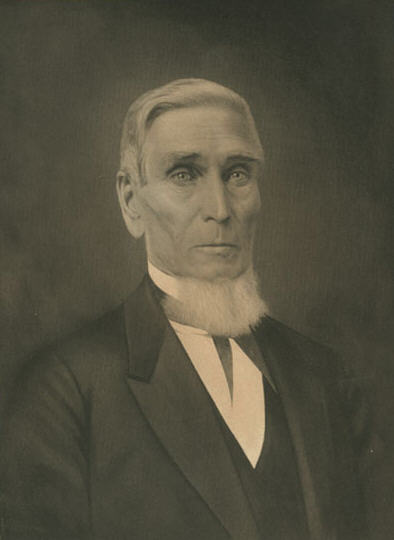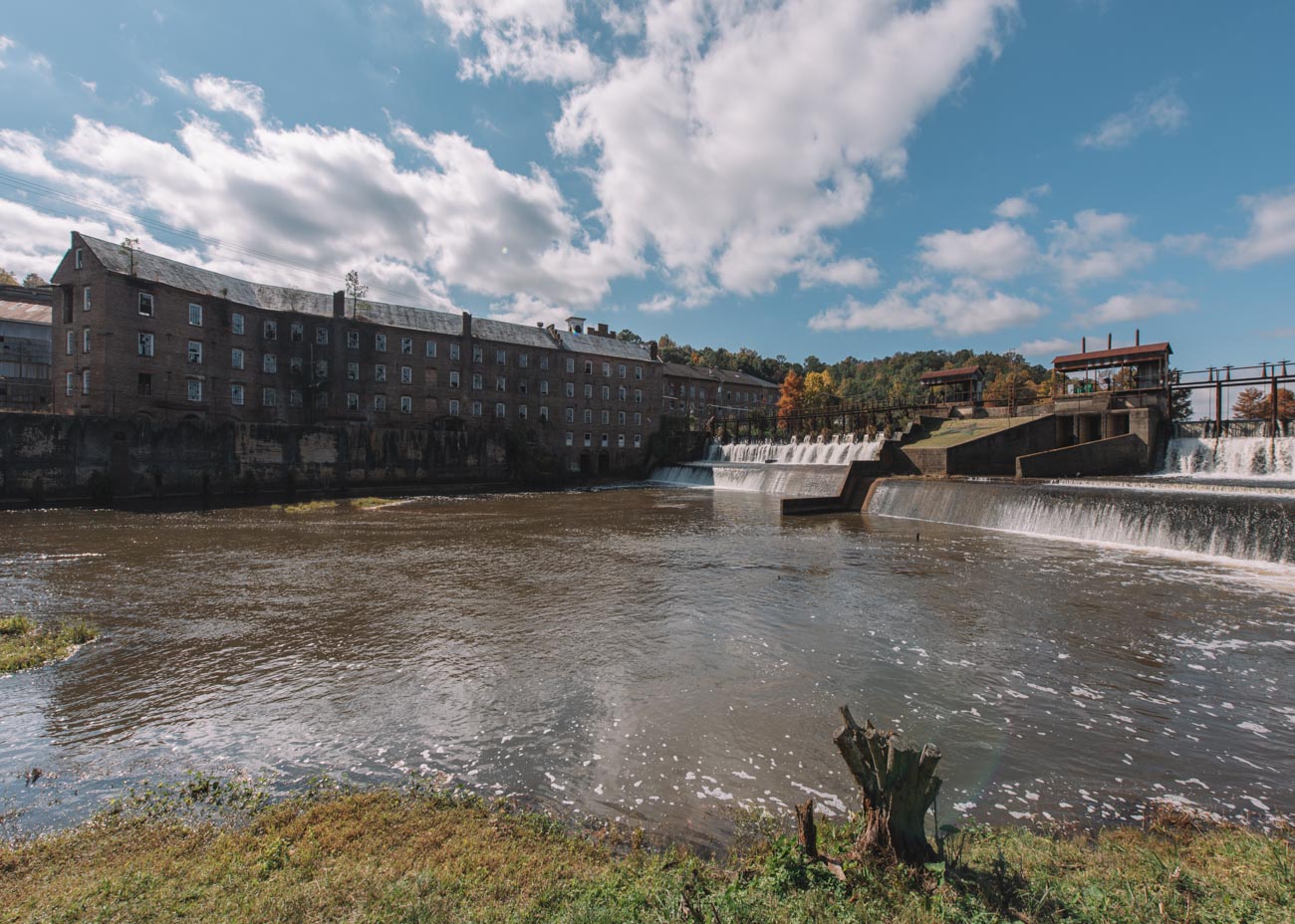| City/Town: • Prattville |
| Location Class: • Industrial |
| Built: • ~1840s | Abandoned: • 2010 |
| Historic Designation: • Historic District (August 30, 1984) |
| Status: • Under Renovation |
| Photojournalist: • David Bulit |

The Daniel Pratt Cotton Gin Factory located in Prattville, Alabama is a cotton gin factory built by Daniel Pratt in the 1830s. Daniel Pratt was an American industrialist whose business enterprise included grist and flour mills, architectural millworks, and cotton and woolen mills, as well as building railroads and developing the vast coal and iron resources surrounding Birmingham in his later years. The factory would become the leading producer of cotton gins in the world as well as the largest gin factory in the world supplying gins to Russia, Great Britain, and France.
Daniel Pratt was born on July 20, 1799, in Temple, New Hampshire. He was the fourth of six children who were all brought up under strict religious discipline and were obliged to work on their family’s small farm. He received a limited education and was apprenticed to an architect at age 16. He left New England in 1819 for Savannah, Georgia, and within two years had moved to Milledgeville, Georgia. Pratt became a successful architect and builder, having become an established figure in his trade by 1827.
While in Georgia, Daniel Pratt met Samuel Griswold who manufactured cotton gins at his factory located in what would be known as Griswoldville, Georgia. He had Pratt manage his factory and within a year Pratt had been promoted to partner. Pratt urged Griswold to expand his operations into Alabama but decided against it due to conflicts between settlers and Native Americans. Pratt decided to go it alone, moving to central Alabama in 1833 with his wife, two slaves, and enough materials to construct 50 gins. He moved to a site known as McNeil’s Mill in Autauga County in 1834 where he began manufacturing cotton gins. In 1838, he relocated further up the creek where he bought an estimated 1,822 acres of land, built a permanent cotton gin factory, and founded the city of Prattville.
Of the buildings still standing, Pratt built the earliest structure in the mid-1840s after he soon found that the building in which he began his gin business was much too small for the rate at which his business was growing. A second structure was built in 1852 adjoining the first. The narrow, multistory buildings were designed in such a way that the factories’ machines could be powered using the fall of water from the Autauga Creek which flowed into shafts inside the buildings. Tall, narrow windows were the only source of light and fireplaces provided the only heat, making fire a real possibility. The factory operated with a small workforce, relatively small machines, and a high proportion of handwork. One notable feature of the 1852 building is the angle which no explanation could be made for, but one theory is that Daniel Pratt’s office was located at the end of this building, and from this vantage point he could survey not only his factory but also the buildings across the creek and those located along the main street of Prattville.
A much larger three-story building was constructed in 1854, double the size of Pratt’s previous buildings and an indication of how fast both Pratt’s business and the town were growing. Probably the factory’s most striking feature, the cupola located atop the building housed signaling devices throughout the years, first a bell, later a whistle, to advise factory workers when shifts began and ended.

Pratt owned few slaves upon his arrival to Autauga County and was in need of more physical labor to clear the land and build his factory, so he purchased twenty slaves to assist him. Upon the completion of his factory in 1839, Pratt’s ownership of slaves increased over the years. He wanted to help “poor whites”, mostly women and children, so he could create a town of “good morals” and thus, used enslaved labor was used in the factory, along with whites that Pratt wanted to help. He would go on to construct houses and churches for his workers, a schoolhouse which was Alabama’s first free school, and multiple factories which occupied buildings within the gin factory complex. The residents of Prattville produced not only cotton gins, but also various kinds of cloth, tin, carriages, wagons, windows, and door sashes. By 1860, the factory was producing over one thousand gins a year and employed around 140 poor white women and children.
Many of Pratt’s businesses were badly affected by the American Civil War, as many of his workers joined the military and his customer base shrank as the economy soured. Despite this, his gin business thrived having become the leading manufacturer of cotton gins in the South. Although Pratt opposed Alabama’s secession from the Union, he provided wool and broadcloth for uniforms for the “Prattville Dragoons,” the first Company of men from the city of Prattville, attached to the Third Alabama Cavalry under the eventual command of General Joseph Wheeler. Pratt also donated $17,000 to meet other needs of the local unit, including horses and saddles for those who could not afford to provide their own. During the Reconstruction period following the Civil War, his ability to call in debts from Northern accounts allowed him to rebuild his own operations, which helped make Autauga County exceptionally stable and prosperous in the period immediately after the war. Following the war, Pratt released his slaves and hired some back into the factory with pay. One of Pratt’s slaves, Charles Atwood, purchased a house in the center of Prattville immediately after emancipation and became one of the founding investors in his former master’s railroad ventures.

Pratt invested in and actively promoted the development of Alabama’s vast untapped mineral resources and the construction of new railways which he believed many cities and towns greatly benefitted from. In the early 1870s, Pratt began purchasing thousands of acres of land in north Alabama. He also began to entrust more and more of his business interests, including a new railroad venture, the South and North Alabama Railroad, to his son-in-law, Henry F. DeBardeleben. Daniel Pratt, along with Henry F. DeBardeleben and James W. Sloss, formed a partnership and bought a controlling interest in the Red Mountain Coal and Iron Company, and reorganized it as the Eureka Mining and Transportation Company. DeBardeleben was put in charge and began rebuilding the Oxmoor Furnaces which were destroyed by Wilson’s Raiders towards the end of the Civil War. Following Pratt’s death, Henry F. DeBardeleben continued in the iron and coal business along with Truman Aldrich and James Sloss, forming the Pratt Coal & Coke Company and opening up Pratt Mines in what is now Pratt City in Birmingham. James Sloss would soon leave the company with the intent of building his own furnace. The Pratt Coal & Coke Company was later sold to Enoch Ensley and then acquired by the Tennessee Coal, Iron & Railroad Company in 1887, which was eventually acquired by U.S. Steel.
Daniel Pratt died on May 13, 1873. His estate was divided up between his daughter Ellen and his nephew and adopted son Merrill, who bought out Ellen in 1881. Merrill’s son Daniel ran the gin business until 1899 when the Daniel Pratt Cotton Gin Company was sold, merging with other manufacturers to form the Continental Gin Company. Montgomery architects Frank Lockwood and Benjamin Bosworth Smith were hired to design a new, more modern factory building resulting in a fourth building joining the earlier three buildings, one whose design responded to newer production techniques and more modern power sources. The older buildings continued to be used, but less for manufacturing and more for storage as the years went by. Around 1960, the Daniel Pratt House which stood behind the gin factory since its construction in 1842 was demolished to make way for a new single-story facility where all actual manufacturing took place from then on. When the company passed into the hands of the Continental Eagle Corporation in the mid-1980s, the older structures were enveloped by metal-roofed additions giving much of the site the appearance akin to a large warehouse.

The Daniel Pratt Cotton Gin Factory was added to the National Register of Historic Places on August 30, 1984, as part of the Daniel Pratt Historic District which includes 140 acres and 154 buildings. On September 12, 2002, a portion of the gin factory that housed the Gurney Cotton Mill burned down due to arson. At the end of 2010, the production of cotton gins ceased at the Prattville plant. Four years later in 2014, the property was bought at auction by the Historic Prattville Redevelopment Authority for the purpose of adaptive rehabilitation. The city of Prattville, the Historic Prattville Redevelopment Authority, and real estate developer Envolve Communities partnered up to redevelop the site into a multi-story high-end apartment complex dubbed “The Mill”. The first stage of the project began in December 2020 with the construction of a levee, site cleanup, and weatherizing the existing buildings for added protection during the construction phases.











